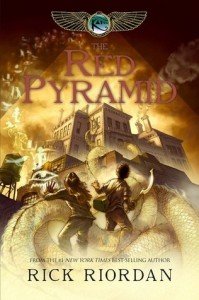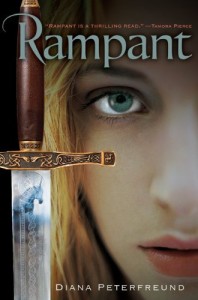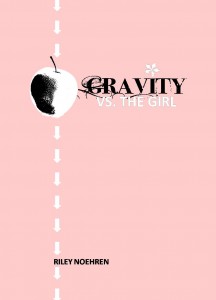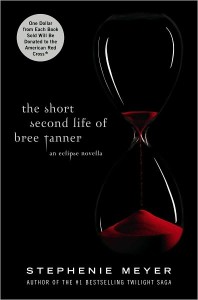
Since their mother’s death, Carter and Sadie have become near strangers. While Sadie has lived with her grandparents in London, her brother has traveled the world with their father, the brilliant Egyptologist, Dr. Julius Kane.
One night, Dr. Kane brings the siblings together for a “research experiment†at the British Museum, where he hopes to set things right for his family. Instead, he unleashes the Egyptian god Set, who banishes him to oblivion and forces the children to flee for their lives.
Soon, Sadie and Carter discover that the gods of Egypt are waking, and the worst of them–Set–has his sights on the Kanes. To stop him, the siblings embark on a dangerous journey across the globe–a quest that brings them ever closer to the truth about their family, and their links to a secret order that has existed since the time of the pharaohs.
Popular young adult protagonists seem to rise in turns. In the span of a decade or so, first, there was J.K. Rowling’s Harry Potter, and then there was Stephenie Meyer’s Bella Swan. While both obviously retain their popularity, the next to step up to the plate was young demigod Percy Jackson. While he isn’t as popular as the first two, Rick Riordan’s Percy Jackson and the Olympians series gained enough attention to be on bestseller lists, and among YA and middle grade readers around the world. Last year it achieved that milestone that shows a literary character has “made it”: the Hollywood movie. Now that Percy’s adventures are over–at least for now–fans of Riordan ask: What’s next?
From Ancient Greece, Riordan brings us to Ancient Egypt, in a whole new fantasy adventure series for young adults entitled The Red Pyramid, the first book from his new series, The Kane Chronicles. Siblings Carter and Sadie Kane grew up barely knowing each other after they were separated when their mother passed away. While Sadie lived a normal life with their maternal grandparents, Carter tagged along with their archaeologist dad and travelled around the world. One Christmas Eve, during their yearly visit to Sadie, their father brings them to the British National Museum, to “make things right.†Something goes wrong, of course, and their dad disappears, but not before releasing five ancient Egyptian gods, including Set, the god of storms and chaos. Rescued by their magician uncle Amos, Carter and Sadie learn the truth about their identity: they come from a family of powerful Egyptian magicians, and they in particular are strong because of their combined bloodlines. This starts their journey all over the world to save their father, stop Set from destroying North America, and figure out both the extent of their powers and the mysteries of their past–all within four days.
If you think the story’s similar to Percy Jackson, well, you’re not wrong. In fact, The Red Pyramid not only reminded me of the young demigod, but also of another series by Riordan, The 39 Clues. Riordan seems to have stumbled on a very successful formula to sell children’s books: (1) take away something important from your young protagonist; (2) place them in a larger-than-life adventure; (3) have them learn something about themselves in the process. We see this formula at work again in The Red Pyramid, and while some readers were put off about this, I didn’t think it was so bad. At least Riordan wasn’t deriving from anyone else but himself – why mess with a good formula? Nevertheless, while I’m fine with thematic similarities between the books, my hope is that he doesn’t become too repetitive with his story arcs–like say, Dan Brown–to the point that I can draw upon his previous plots to solve any mysteries by the middle of the book. Click here to read the rest of the review.
Rating: [rating=3]
2010 Challenge Status:
* Book # 51 out of 100 for 2010
My copy: paperback, Php459 from National Bookstore
Cover image: Goodreads
Blurb: Back of the book



 Gravity vs. the Girl by Riley Noehren
Gravity vs. the Girl by Riley Noehren